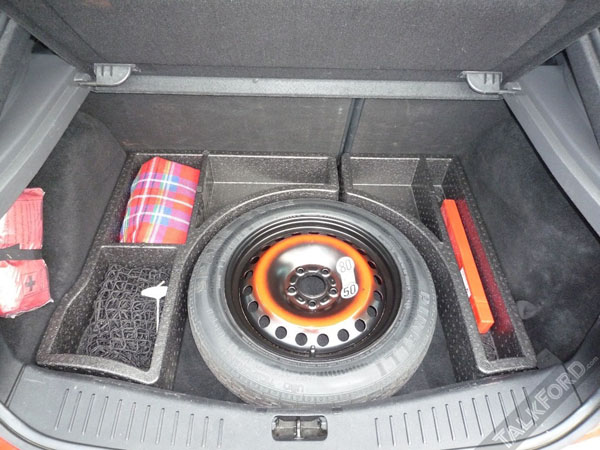
I still continue to hear criticism of spacesaver spare wheels from many people. Much of it is unjustified and ill-considered in my opinion.
Spacesaver wheel/tyre combinations are significantly narrower and slightly smaller in diameter than standard units. Their main reason for existing is to give more room in the boot.
This is firstly, because of the increasingly large tyres being fitted to modern cars and secondly because, as people move down to smaller cars to save fuel and reduce emissions, they like to retain as much interior space as possible.
Spacesaver wheels also reduce weight which will have some impact on performance, fuel consumption and emissions. The differences will be minimal, but with over 70 million new cars going onto the planet’s roads every year the total saving is worth having.
The disadvantages of space-savers is that they are often speed limited to something like 80 km/h and are restricted in the distance they can travel. This can vary quite a bit, but 250 kilometres is probably the most common.
Those who dislike space-savers say they are not suited to Australia due to the vast distances travelled in our continent. True, but the reality is that Australia is one the most urbanised country on the face of the planet and many seldom drive more than a few dozen kilometres from home.
Only a tiny percentage of people will ever find themselves in the remote outback in an area that’s 250 km from the nearest service station or tyre retailer. In the meantime the other ninety-nine-point-something per cent of us are running around in cars with a huge spare tyre that may never be used.
There are other advantages in having a spacesaver. Human nature means that if a full-size spare has been fitted to replace a punctured one, the flat tyre often stays in the boot indefinitely. Get another flat and you are completely stranded.
Spacesaver wheels are coloured bright yellow or orange to remind the driver they are fitted to the car and that the flat full-sized tyre should be repaired and put back onto the vehicle as soon as possible.
There are a lot of cars out there with bald, partly deflated spare tyres in the boot. Usually because someone on a tight budget has decided to use the spare on the car instead of buying a new one.
Or because their car is being sold or traded so the owner has swapped the tyres around to put the best looking ones on road.
So have a serious think about your driving habits before deciding between a full-size or space-saver wheel. But have a look in the boot of your potential new car first, because some daft designers have come up with the idea of having a full-sized wheel well with a space-saver sitting in it. Thus no space saving.
The argument is that you need somewhere to keep a flat full-sized tyre. My counter argument is why not have a plastic bag in which to keep the flat tyre and simply store it in the boot – as a reminder to get it fixed as soon as possible.